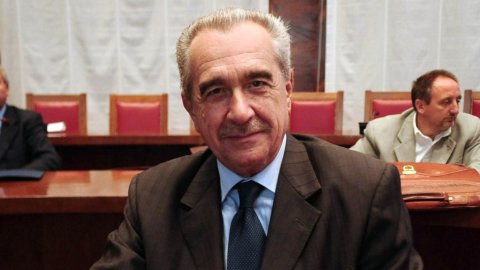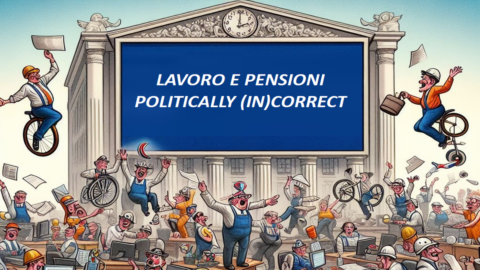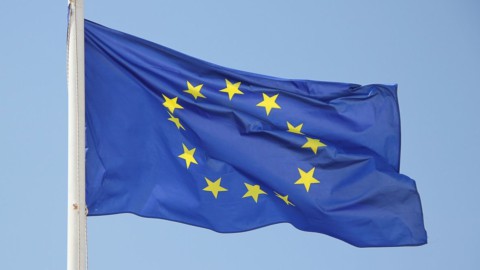If Fiat has realized its American dream with the acquisition of Chrysler, the announced wedding between FCA and PSA they would crown uFiat's flirtation with France is it has lasted for more than a century.
Already in 1904 Fiat established itself in Paris with a repair shop for its imported cars and in 1908 the first economic taxi, the Fiat 1 Fiacre, was adopted in Paris (1600 of which would be built and would also circulate in New York and London).
In the 20s, he founded a company in Paris, SAFAF (Société Anonyme Française des Automobiles Fiat) for the direct marketing of his models in France.
A young man from Turin, Enrico Teodoro Pigozzi, is called to manage the company, a character who is almost forgotten today but who will contribute to making the history of the automobile in France.
With the crisis of 1929 and the subsequent Great Depression, the protectionist policies adopted by the various European countries led Fiat to decide to produce directly in Paris with an assembly plant for the components produced in Turin of the Balilla (renamed 6CV in France) and after a short time of the Fiat Ardita (also renamed as 11CV).
The success of these cars convinced Fiat in 1935 to support Pigozzi's initiative to expand production with the acquisition of a new factory in Nanterre and the establishment of a new company, SIMCA (Societé Industrielle de Mècanique et de Carrosserie Automobile), under the control of Fiat with Pigozzi managing director and also shareholder, continuing to assemble Fiat cars.
The following year, the new company launched the Simca-Fiat Cinq even a few weeks ahead of its original la Fiat Topolino.
1936 was also the year of the popular front's victory in the legislative elections and relations between the French government and the Italian fascist regime soon entered a crisis: for reasons of political and commercial expediency, the Simca-Fiat brand will be replaced only by the Simca name, acquiring the company an exclusively French characterization.
In 1939 Fiat will make use of the intermediation of Pigozzi for a contract for the supply of trucks to the French government and above all Agnelli and Valletta will make use of the same Pigozzi, who will subsequently be naturalized French, as mediator with De Gaulle and the government in exile in the period 1940-1944.
Starting in the fifties and throughout the sixties, Simca achieved increasing market shares with the production of cars of its own origin, albeit with the supervision of the two great Fiat designers, Dante Giacosa and Oscar Montabone.
Quite the opposite will happen: its most successful model in France, the Simca Aronde will be replicated in Italy with the Fiat 1400.
Again in 1961 Fiat, to support the production of the Simca 1000 (car with original bodywork but with Fiat mechanics and engine), planned the Poissy plant and another for spare parts in Nanterre.
Moreover, in 1960 Fiat, which still held a substantial share package, promoted the restructuring of Simca into two divisions, Simca Automobiles for automobile production, and Simca Industries, which produced industrial vehicles under the Unic brand, a company taken over in 1952.
The demolition of customs barriers thanks to the common European market had in fact led Fiat to progressively disengage from ties with Simca to market its cars directly in France, of which the Fiat 500 would soon become an icon, especially for the Parisian ladies.
In 1966, Simca Automobiles was definitively acquired by Chrysler Europe, which sold it to PSA ten years later., while Simca Industries will be taken over by Fiat which will make it its Commercial Distribution Affiliation as Fiat France with President Umberto Agnelli.
Over the next few years Fiat France will be the head of the largest foreign industrial group in France: not only will it be the first foreign manufacturer to hold the largest share of the French automobile market, immediately after the national manufacturers and ahead of the German and English ones, but with the branches of the commercial network, the production plants of industrial vehicles, agricultural machinery , components and financial companies, Fiat will also be the first foreign company in terms of employment, with a maximum level reached of around forty thousand employees.
On the trade union side, in order to stem the conflict between the post-May period in France and the seventies, similarly to what happened previously in Italy with the SIDA (Italian automobile union), it formed itself in the commercial offices of Fiat France and in the production plants, in particular of the industrial vehicles of Fiat Unic of Trappes and Bourbon Lancy, a moderate company union, the SNIFF (Syndicat National Indépendant Fiat France), which for many years will enjoy the majority consensus of the workers. Until a few years ago, Sniff was still able to express their representatives in the European Company Committee of Fiat.
Moreover, already at the end of the sixties, in a European automotive market in which German companies (VW, Mercedes, BMW and Ford Europe) have recovered and British ones (British Leyland in primis) are about to enter an irreversible crisis, it appears evident for the Italian and French houses to find alliances among themselves to increase the volume of "fire" especially against the Germans.
In 1968 he tries first the Lawyer who reaches with the Michelins, controlling shareholders of Citroen, an agreement to enter Citroen with a minority stake and rise to 49% within four years.
On an industrial level, the agreement also provided for cooperation for studies, research, procurement and commercial activities.
However, the French State, with President George Pompidou, will veto the entry of a foreign investor into an industrial company considered strategic and the Fiat-Citroen agreement will be dissolved in 1973. Fiat will however continue the production of the 212 type commercial vehicle, born from a joint project between the two companies, while Citroen will be sold in 1974 to Peugeot.
For the law of retaliation a few years later it will be the Italian government that will veto the acquisition of Alfa Romeo by the French Renault.
The "physical" presence of Fiat in France will be consecrated in 1974 with the inauguration of the Tour Fiat in Paris in the La Defense district.
The Tour Fiat (today Tour Areva) is still the tallest skyscraper in Paris, with its 184 meters high and its 44 floors of offices, where Fiat initially concentrated its administrative, financial, commercial and control management.
In the Parisian skyline it is that skyscraper clad in black granite and tinted glass in the shape of a square prism that stands out against the background of the horizon.
However, the collaboration with the French will continue in the following years with industrial agreements limited to certain projects or products.
SOFIM was established in 1974 (Società Franco Italiana Motori) with an agreement between Iveco-Fiat and Saviem-Renault for the production in Foggia of fast diesel engines that will be mounted on the commercial vehicles of the two companies. However, the agreement will last only 5 years and will not be renewed, with the transfer of the entire ownership to Fiat-Iveco. .
The agreements signed in 1980 by Fiat Auto with PSA, controlled by the Peugeot family, for the joint design of a 1.000 cc engine and the design and production of a commercial van will have a very different outcome.
The engine will be industrialized individually by the two companies (Fiat in the Termoli plant in Molise), while a jointly owned company will be set up, Sevel spa, with a single plant in Atessa in Abruzzo for the annual production of around 200.000 vans for the three brands, Fiat, Citroen and Peugeot.
The Sevel corporate agreement, renewable every 5 years and now in force for about thirty years. represents a good practice of equal joint venture (and also a case study) among the car manufacturers which for the most part have seen the alliances fail or be a preparatory step of the acquisition (in order not to go far, just think of the bankruptcy of the ' Fiat-GM alliance or the incorporation of Chrysler into FCA).
The positive collaboration with PSA also developed in France with the establishment of the joint venture Sevel Nord for the production from 1993 to 2012 in the PSA plant in Valenciennes, near Paris, of an MPV car for the 4 brands (Fiat, Lancia, Peugeot and Citroen).
Beyond these circumscribed industrial agreements, in the risk of the global automotive scenario in which the struggle between the manufacturers will allow five or at most six groups to survive, as Sergio Marchionne prophesied, it is not Fiat never failed in its goal of forming an alliance or acquiring one of the two French manufacturers.
Fiat already tried it in the nineties with the attempt at an alliance with Renault, still state-owned, but the French Ministry of Finance rejected the proposal citing the occupational risk deriving from the overlapping of similar products.
Rumors about possible agreements between Fiat and PSA, or rather between the Agnelli family and the Peugeot family, then chased each other in the early 2000s in Italy and France, and ceased only with the acquisition of Chrysler and the establishment of FCA (Fiat Chrysler Automobiles).
At the beginning of this year, PSA does not rule out an alliance with FCA, which is instead aiming for a merger with Renault, blocked by the French government, which remained a "significant" shareholder even after its privatization, due to the alleged lack of guarantees on governance and employment levels.
Now with the next wedding, now almost done, between FCA and PSA, (this time with the non-opposition of the French government, also a minority shareholder of PSA) the fourth world automotive group will be born surpassing the American General Motors.
And the danger of ostracism could come from the United States and its President, since a shareholder of PSA with about 6%, and therefore of the nascent French-Italian-American Group, even if with a diluted share, are the Chinese of the group Dongfeng automotive. GM's legal charges towards FCA these days could be the alarm bell.





